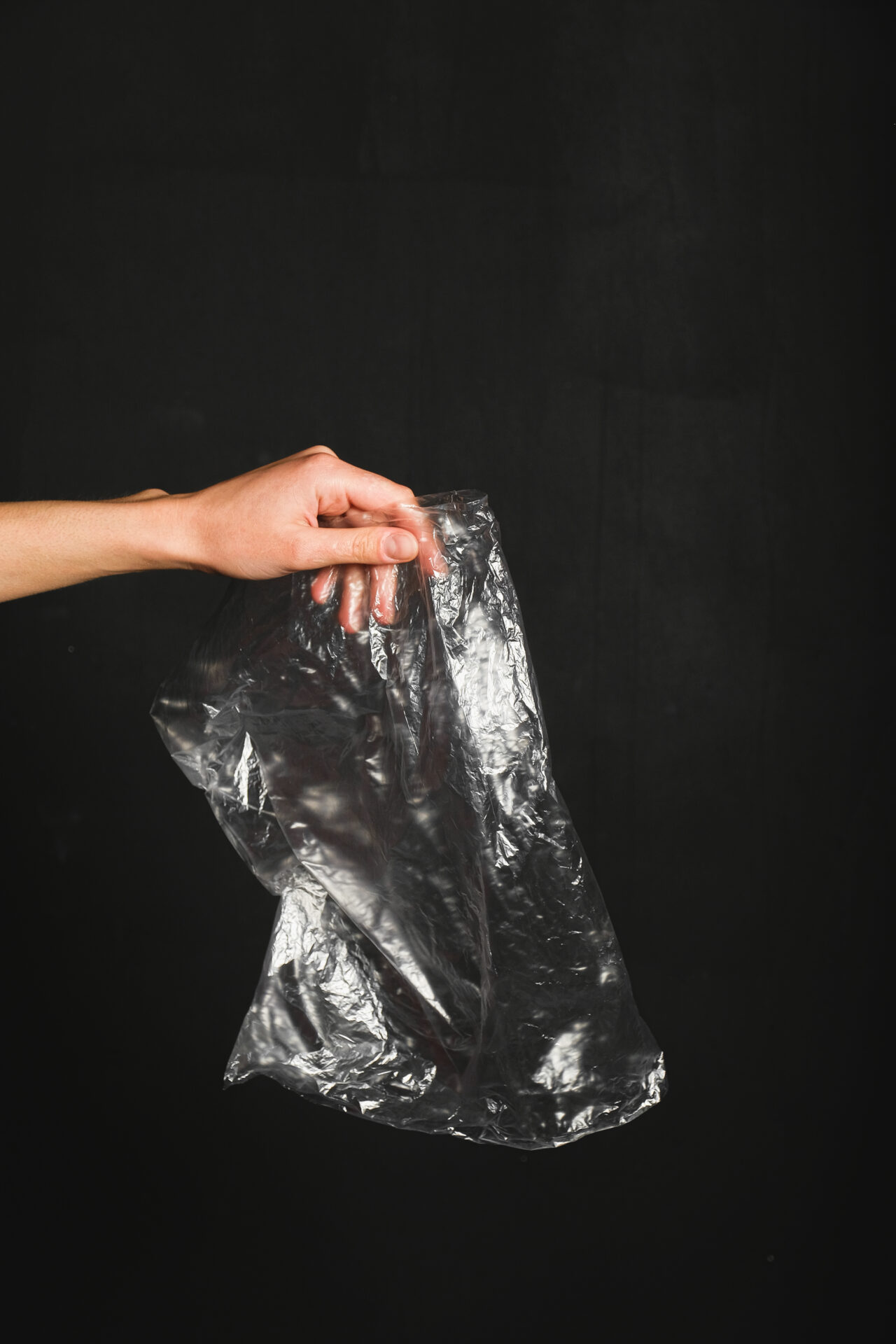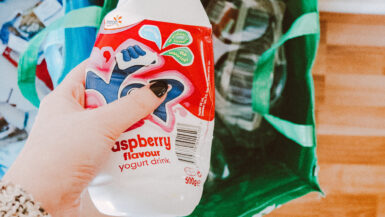In today’s rapidly evolving world, the alarming consequences of plastic pollution have pushed many individuals and communities to embrace a lifestyle that minimizes their plastic footprint. One such approach is combining plastic-free living with the principles of permaculture, a sustainable design system that emphasizes working in harmony with nature. In this article, we will delve into the core topics of plastic-free living and permaculture, illustrating how their interconnectedness can lead to a more sustainable and environmentally-friendly lifestyle. By fostering a better understanding of these concepts, we aim to inspire readers to adopt practices that not only contribute to the reduction of plastic pollution but also promote a harmonious coexistence with our planet’s natural ecosystems.
Integrating Plastic-Free Principles into Permaculture Practices
Permaculture is a holistic design system that focuses on creating sustainable and regenerative systems in harmony with nature. By integrating plastic-free principles into permaculture practices, we can significantly reduce the environmental impact of our gardens and landscapes while promoting a healthier ecosystem. In this subsection, we will explore various techniques and strategies that can help you successfully integrate plastic-free living into your permaculture endeavors.
1. Opting for Natural and Biodegradable Materials
One of the key aspects of plastic-free living is choosing natural and biodegradable materials over synthetic and non-degradable ones. In a permaculture garden, this can be achieved by using organic mulch, such as leaves, straw, or wood chips, instead of plastic mulch. Additionally, consider using biodegradable plant pots, such as those made from coir or peat, which can be directly planted into the ground and will decompose naturally over time.
2. Reusing and Repurposing Items
Permaculture emphasizes the importance of minimizing waste, and one way to do this is by reusing and repurposing items that would otherwise go to waste. For example, you can repurpose glass jars as storage containers for seeds or use old pallets to create raised beds or compost bins. By adopting a zero-waste mindset, you can significantly reduce the amount of plastic waste generated in your garden and contribute to a cleaner environment.
3. Creating Wildlife-Friendly Habitats
Plastic pollution has a devastating impact on wildlife, particularly aquatic animals. One way to counteract this is by creating wildlife-friendly habitats in your permaculture garden. Plant a variety of native species that provide food and shelter for birds, insects, and other creatures, and avoid using plastic netting, which can trap and harm wildlife. Instead, opt for natural materials like jute or hemp to create protective barriers.
4. Harvesting and Storing Produce Sustainably
To fully embrace plastic-free living in your permaculture garden, it’s essential to consider how you harvest and store your produce. Use reusable cloth bags or baskets when harvesting fruits and vegetables, and avoid using plastic storage containers for preserving or freezing your produce. Glass jars, cloth bags, and even beeswax wraps are excellent plastic-free alternatives for storing food.
5. Supporting Local and Sustainable Businesses
Lastly, integrating plastic-free principles into your permaculture lifestyle extends beyond your garden. Support local and sustainable businesses that share your values and offer eco-friendly products, such as seeds, tools, and composting materials. By fostering a community that values plastic-free living and permaculture, you can collectively work towards creating a more sustainable and environmentally-friendly world.
By adopting these strategies, you can effectively integrate plastic-free living into your permaculture practices, resulting in a healthier ecosystem and a reduced environmental impact.
Alternatives to Plastic in Permaculture Garden Design
Incorporating plastic-free alternatives into your permaculture garden design is an essential step towards achieving a sustainable and environmentally-friendly landscape. By seeking out innovative and eco-friendly solutions, it is possible to create a garden that not only nourishes the land but also respects the planet’s delicate ecosystems. In this subsection, we will explore various plastic-free alternatives that can be implemented in permaculture garden design, offering practical and effective ways to reduce your garden’s plastic footprint.
Replacing Plastic Planters with Natural Containers
Instead of using plastic pots for your seedlings and plants, opt for natural and biodegradable containers. Compostable pots made from materials like coir, peat, or even newspaper are excellent alternatives that will decompose over time, enriching the soil and reducing waste in the process.
Utilizing Natural Fencing Materials
Rather than using plastic fencing, consider constructing garden boundaries with materials like bamboo, willow, or reclaimed wood. These natural alternatives not only blend seamlessly with the permaculture aesthetic but also provide a more sustainable and environmentally-friendly solution.
Implementing Plastic-Free Irrigation Systems
Irrigation is a crucial aspect of any garden, and permaculture is no exception. Instead of relying on plastic hoses or sprinklers, explore alternative options such as clay pot irrigation, drip irrigation systems using reclaimed materials, or even rainwater harvesting systems, which minimize the use of plastic components while promoting water conservation.
Employing Organic Mulch and Ground Covers
Replace plastic mulch with natural and organic alternatives like straw, wood chips, or leaf litter. These materials not only help retain moisture and suppress weeds but also break down over time, contributing to increased soil fertility. In addition, consider using living ground covers such as low-growing plants or creeping groundcovers as a plastic-free way to protect the soil and prevent erosion.
Opting for Plastic-Free Garden Tools and Accessories
Garden tools and accessories are often overlooked sources of plastic waste. Choose gardening tools with wooden or metal handles, and look for accessories like plant markers, trellises, and garden ties made from sustainable and biodegradable materials such as bamboo, jute, or hemp.
By embracing these plastic-free alternatives in your permaculture garden design, you are not only minimizing your garden’s dependence on plastic but also actively contributing to the preservation of our planet’s ecosystems. With a heightened focus on sustainability and environmental stewardship, your permaculture garden will serve as a living testament to the power of plastic-free living and its role in shaping a more harmonious and eco-friendly future.
Zero-Waste Techniques for Sustainable Harvesting and Storage
Embracing zero-waste techniques for harvesting and storage is an essential component of integrating plastic-free living and permaculture principles. By adopting sustainable practices, we can ensure that our gardens not only nourish the land but also minimize waste and contribute to a healthier environment. In this subsection, we will delve into various zero-waste techniques for sustainable harvesting and storage, providing practical guidance and inspiration for those looking to cultivate a greener and more eco-conscious garden.
1. Harvesting Produce Mindfully
Mindful harvesting practices are crucial for reducing waste and ensuring the longevity of your garden. Take only what you need, and avoid picking fruits or vegetables before they’re ready, as this can lead to increased waste. Additionally, be gentle when harvesting to prevent damaging plants, which can hinder future growth and productivity.
2. Utilizing Reusable Containers and Bags
When harvesting your produce, use reusable cloth bags, baskets, or containers to transport your fruits and vegetables. This not only eliminates the need for single-use plastic bags but also encourages a zero-waste mentality in your garden.
3. Preserving Your Harvest
Preserving your harvest is a fantastic way to extend the life of your produce and minimize waste. Experiment with traditional preservation methods like canning, pickling, fermenting, and drying, which not only reduce plastic waste but also contribute to a more self-sufficient and sustainable lifestyle.
4. Storing Produce with Plastic-Free Materials
Store your produce using plastic-free materials like glass jars, cloth bags, or beeswax wraps. These eco-friendly alternatives not only help reduce plastic waste but also maintain the freshness and quality of your fruits and vegetables.
5. Sharing Your Harvest
Sharing your harvest with friends, family, or neighbors is a wonderful way to minimize waste and foster a sense of community. If you have an abundance of produce, consider donating it to a local food bank or community organization, helping to combat food waste and support those in need.
6. Composting Inedible Plant Materials
Finally, ensure that any inedible plant materials, such as leaves, stems, or peelings, are composted rather than thrown away. Composting not only diverts waste from landfills but also creates nutrient-rich compost that can be used to nourish your garden and support future growth.
By implementing these zero-waste techniques for sustainable harvesting and storage, you are actively contributing to a more environmentally-friendly and sustainable garden. Combining plastic-free living with permaculture principles, you can create a harmonious space that not only provides nourishment but also positively impacts the planet and the well-being of future generations.
Eco-Friendly DIY Solutions for Permaculture Pest Control
In permaculture, pest control is an important aspect that can significantly impact the overall health and productivity of your garden. However, conventional methods often involve the use of plastic containers and synthetic chemicals that can harm the environment. In this subsection, we will explore eco-friendly DIY solutions for permaculture pest control that align with the principles of plastic-free living, ensuring that your garden remains bountiful and sustainable without compromising the well-being of our planet.
Attracting Beneficial Insects and Wildlife
One of the most effective ways to control pests in a permaculture garden is by attracting beneficial insects and wildlife. These natural predators can help keep pest populations in check without the need for harmful chemicals. Plant a variety of native flowering plants that provide food and shelter for beneficial insects like ladybugs, lacewings, and parasitic wasps. Additionally, consider installing birdhouses or bat boxes to attract insect-eating birds and bats.
Creating a DIY Insecticidal Spray
Rather than using store-bought pesticides packaged in plastic containers, create your own eco-friendly insecticidal spray using natural ingredients. Combine water, a small amount of liquid soap, and a few drops of essential oils like neem, eucalyptus, or peppermint, which have insect-repelling properties. Spray this mixture on affected plants to help control pests like aphids, mites, and whiteflies without negatively impacting the environment.
Practicing Companion Planting
Companion planting is a technique that involves growing different plants together to support each other’s growth, deter pests, and promote biodiversity. For example, planting marigolds near tomatoes can help repel nematodes, while growing garlic alongside roses can deter aphids. By strategically selecting and placing plants in your permaculture garden, you can create a natural defense system against pests that eliminates the need for plastic-packaged chemical solutions.
Implementing Physical Barriers
Physical barriers can be an effective way to protect your plants from pests without resorting to plastic-based materials. For example, use copper tape to deter slugs and snails, or create a floating row cover with a lightweight and biodegradable fabric like natural jute to protect plants from insect pests. These environmentally-friendly solutions not only help control pests but also contribute to a plastic-free garden.
Utilizing Homemade Traps
Finally, consider using homemade traps made from repurposed or natural materials to catch pests. For example, create a simple fruit fly trap by filling a glass jar with apple cider vinegar, covering it with a piece of biodegradable cloth, and securing it with a rubber band. Puncture small holes in the cloth to allow fruit flies to enter, trapping them inside the jar. This is just one example of how you can create effective pest control solutions without relying on plastic-packaged products.
By adopting these eco-friendly DIY solutions for permaculture pest control, you can maintain a healthy and thriving garden while staying true to the principles of plastic-free living. This mindful approach to pest management demonstrates the powerful synergy between permaculture and plastic-free living, showcasing how sustainable practices can lead to a more harmonious and environmentally-conscious garden experience.
Enhancing Soil Health with Plastic-Free Composting Methods
An essential aspect of both plastic-free living and permaculture is nurturing the health of the soil in a sustainable and eco-friendly manner. One of the most effective ways to achieve this is through composting, a process that transforms organic waste materials into nutrient-rich humus that can be used to fertilize and enrich the soil. In this subsection, we will explore various plastic-free composting methods that not only help improve the quality of your permaculture garden’s soil but also contribute to a more sustainable and environmentally-conscious lifestyle.
Backyard Composting with Natural Containers
Traditional backyard composting often relies on plastic bins or containers, but you can easily switch to more sustainable alternatives. Consider using wooden pallets to construct a composting bin or repurpose a large, natural container such as a ceramic or terracotta pot. These options not only reduce the plastic waste generated by your composting system but also blend seamlessly into your permaculture garden’s design.
Implementing Vermicomposting with Non-Plastic Materials
Vermicomposting, or worm composting, is an efficient and eco-friendly method of breaking down organic waste. Instead of using plastic worm bins, opt for non-plastic materials such as wooden boxes, repurposed furniture, or even large burlap sacks. By choosing natural and biodegradable materials, you can create a worm composting system that aligns with the principles of plastic-free living and permaculture.
Exploring Bokashi Fermentation
Bokashi fermentation is a composting method that relies on anaerobic microbes to break down organic waste. While commercial Bokashi bins are typically made of plastic, you can create your own using a large glass or ceramic container. This approach not only eliminates the need for plastic but also offers a compact and odor-free composting solution suitable for both urban and rural permaculture gardens.
Utilizing Trench Composting
Trench composting is a simple and effective method that requires no containers at all. Dig a trench in a designated area of your permaculture garden and fill it with organic waste materials such as kitchen scraps, yard trimmings, and even shredded newspapers. Over time, these materials will decompose and enrich the surrounding soil, improving fertility and supporting plant growth without the need for plastic containers or equipment.
Composting with Natural and Reusable Accessories
Finally, when it comes to turning and aerating your compost pile, be sure to use plastic-free tools and accessories. Choose gardening tools with wooden or metal handles, and opt for compost thermometers made from biodegradable materials such as bamboo or stainless steel. By making these simple switches, you can maintain your composting system without compromising your commitment to plastic-free living.
By embracing these plastic-free composting methods, you can actively contribute to the enhancement of your permaculture garden’s soil health while minimizing your environmental impact. This harmonious integration of permaculture and plastic-free living principles not only nurtures the land but also fosters a more sustainable and eco-conscious approach to gardening, paving the way for a brighter and greener future for our planet.





Leave a reply